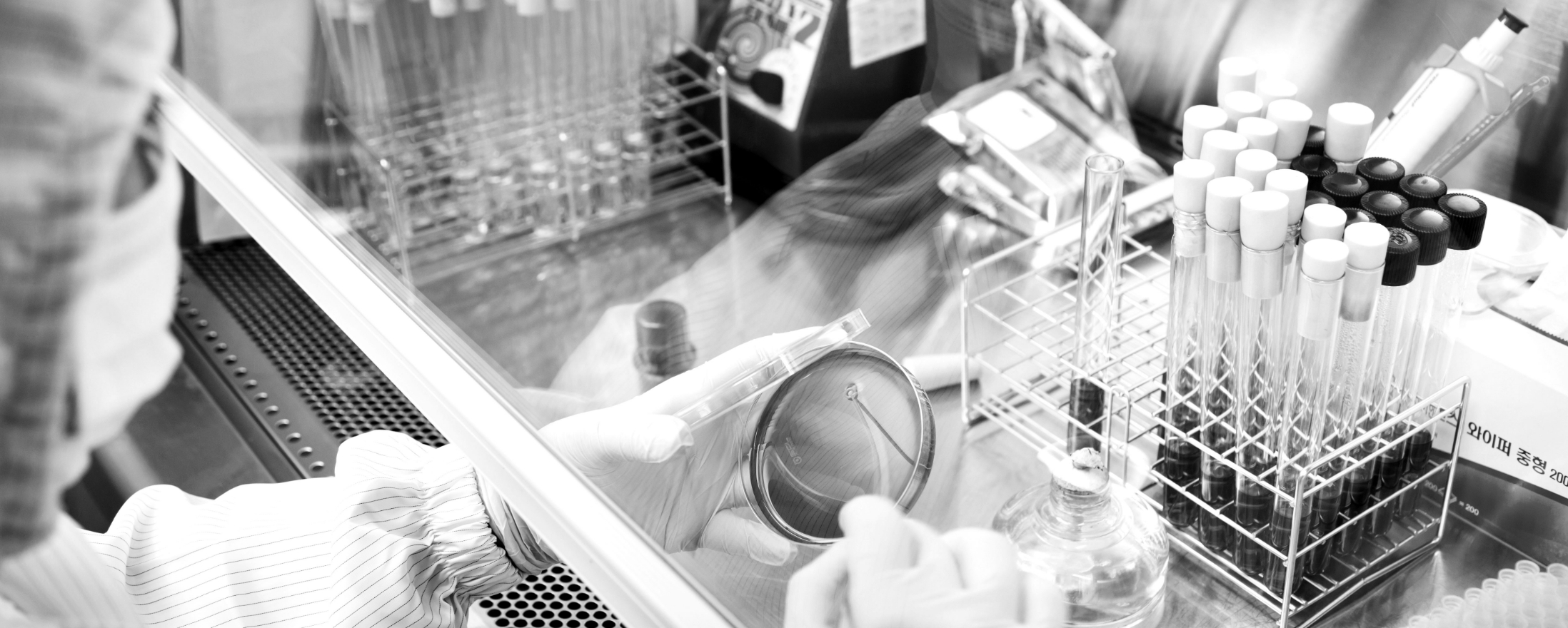As the demand for plant-based alternatives for hormone replacement therapy is increasing, but there is also evidence that some of the plant-based alternatives (such as isoflavones) increase the risk for oestrogen-dependent malignant tumours, EstroG-100® was studied in detail. The result: EstroG-100® did not show any activation of the oestrogen-stimulated mitogenesis of oestrogen-dependent MCF-7 human breast cancer cell lines any more than the three hot water extracts of the three herbs and thus does not seem to exhibit in vivo the oestrogen-dependent side effect of traditional hormone therapy in this respect.
Kim SJ, Jin SW, Lee GH, Kim YA, Jeong HG. Evaluation of Estrogenic Activity of Extract from the Herbal Mixture Cynanchum wilfordii Hemsley: Baek-su-o, Wildford’s cynanchum; Phlomis umbrosa Turczaninow: Sok-dan, and Angelica gigas Nakai: Danggui, Korean angelica, Giant angelica. Toxicol Res. 2017; 33: 71–77.
As the demand for herbal-based alternatives for hormone replacement therapy is increasing, but there is also evidence that some of these alternatives increase the risk for oestrogen-dependent malignancies, the aim of this study was to investigate the oestrogenic activity of CPAE.
Hot water extracts of Cynanchum wilfordii: Baek-su-o, Wildford’s cynanchum; Phlomis umbrosa: Sok-dan and Angelica gigas (CPAE) Nakai: Danggui, Korean angelica, Giant angelica are dissolved after filtering for use in various in vitro assays to investigate activity at the human oestrogen receptor.
CPAE showed no estrogenic activity in various in vitro assays (STTA assay, MCF-7 cells) and no activity at the ER receptor or at oestrogen-regulated genes (MCF-7 cells, respectively), no effect on uterine wet weight in rats in the in vivo assay.
Since CPAE showed no oestrogenic activity in various in vitro assays, it is a useful herbal agent for the treatment of climacteric symptoms without unwanted independent oestrogenic activity.
Since CPAE or EstroG-100® has been shown in clinical studies to be effective against almost all climacteric symptoms, its effect does not appear to be mediated by the oestrogen receptor.
Bo-Yeon Kwak, Jong-Koo Kang, Nam-Jin Lee – Binding Affinity of EstroG to ER alpha and beta using EnBio Estrogen Receptor / Coactivator Ligand Assay System (March 2008).
To investigate the binding affinity of EstroG-100® to oestrogen receptors.
The roots of the three herbs Phlomis umbrosa: Sok-dan, Angelica gigas Nakai: Danggui, Korean angelica, Giant angelica and Cynanchum wilfordii: Baek-su-o, Wildford’s cynanchum were extracted with hot water and filtered to remove small particles. The filtrate was concentrated and spray-dried to obtain EstroG-100®. The EstroG-100® powder was dissolved in DMSO and processed further using the oestrogen receptor assay system.
In this experiment set-up, no binding affinity of EstroG-100® to the oestrogen receptors alpha or beta could be detected.
EstroG-100® is safe and non-toxic.
EstroG-100® showed no binding affinity to the oestrogen receptor alpha or beta in vitro. It therefore does not exert its effect via the oestrogen pathway.
Nam-Jin Lee, Yu-Ri Jeong – Effect of EstroG-100® on the proliferation of MCF-7 cells (January/February 2007).
Since EstroG-100® has been shown to alleviate climacteric symptoms in clinical studies, the aim of this study was to investigate in cultures of human breast cancer cells whether the components of EstroG-100® and EstroG-100® itself are able to activate the proliferation of these cells.
The individual components of the EstroG-100® and the EstroG-100® itself were dissolved in phenol-free RPMI 1640, washed with buffer and, after this pre-treatment, added in various concentrations to the MCF-7 cells in the wells of microtitre plates and cultured for 48 hours. 50 µl of MTT (2 mg/ml) was then added to each well and cultured in 5% CO2 for four hours. After removal of the medium, 150 µl of DMSO was added to each well, the plate was shaken and the absorbance was measured at 540 nm and growth was compared with the control.
The hot water extracts of Cynanchum wilfordii: Baek-su-o, Wildford’s cynanchum showed no activation of the oestrogen-stimulated mitogenesis of oestrogen-dependent MCF-7 human breast cancer cell lines. The hot water extracts of Phlomis umbrosa: Sok-dan also showed no activation of the oestrogen-stimulated mitogenesis of oestrogen-dependent MCF-7 human breast cancer cell lines. The hot water extracts of Angelica gigas Nakai: Danggui, Korean angelica, Giant angelica also showed no activation of the oestrogen-stimulated mitogenesis of oestrogen-dependent MCF-7 human breast cancer cell lines, just as little as EstroG-100® itself.
EstroG-100® does not activate the proliferation of oestrogen receptor-positive MCF-7 cells.
The authors speculate that the growth inhibition by EstroG-100® at high doses is due to the decursin in Angelica gigas Nakai: Danggui, Korean angelica, Giant angelica. Decursin and its structural isomer decursinolangelate inhibit oestradiol-stimulated growth and ERα activation and reduce Erα mRNA levels without being attributed to interfere with the endocrine system, as it is 1. Used by menopausal women 2. No uterotrophic effects were observed in two OVX oral dose tests and no differences were seen in the endocrine organs of male or female rats 13 weeks after an oral toxicity test and 3. In two clinical studies, there was no effect of EstroG-100® on serum levels of E2 or FSH.
EstroG-100® did not show activation of oestrogen-stimulated mitogenesis of oestrogen-dependent MCF-7 human breast cancer cell lines any more than the three hot water extracts of the three herbs and thus does not appear to exhibit the oestrogen-dependent side effect of traditional hormone therapy on this point in vivo.

